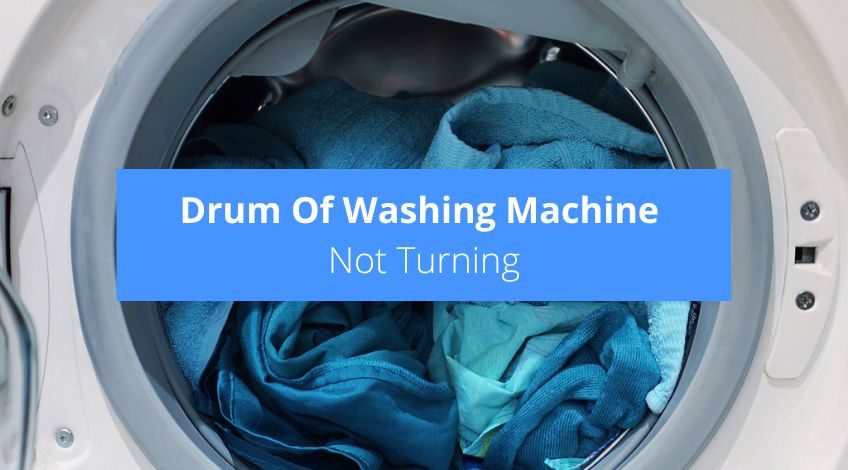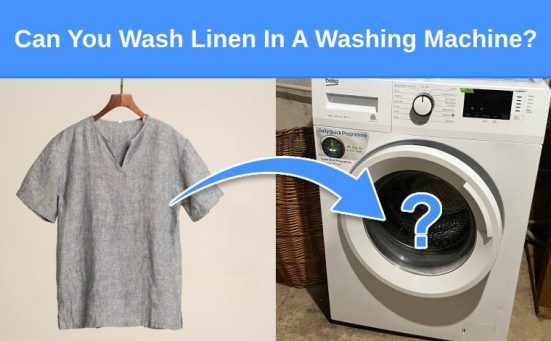
Drum Of Washing Machine Not Turning? (try this)
If the drum of your washing machine doesn’t turn after starting the program it can be both annoying and worrying. Sometimes there is an easy solution for this problem but in some cases you’ll need a professional engineer to help. We have searched our database and found several reasons why the drum of the washing machine won’t turn.
A Word Of Warning
Before we get into the reasons your machine’s drum won’t turn, we need to remind you of a few words on safety. Never attempt to tamper with any electrical components unless you are competent and confident of your abilities. Always ensure the machine is disconnected from the electrical supply before undertaking any repairs. And check that your machine is not still covered by a warranty, as taking it apart yourself could invalidate any warranty. If you’re in any doubt contact the manufacturer who will be able to advise you on the status of your warranty and recommend your next course of action.
What Causes A Washing Machine Drum To Not Turn?
There are a number of reasons why the drum on your machine might have stopped turning. Some simple, easy fixes and others a job for an engineer. Let’s look at what can cause your machine’s drum to stop turning.
No Power
This might be obvious but you’d be surprised at just how many times the problem is that the machine isn’t plugged in or the socket is switched off. Or possibly the socket is at fault, you can check this by plugging something else into the socket and see if it works.
This also allows you to leave the washing machine unplugged for around 15 to 20 minutes. This can sometimes be enough to reset whatever went wrong, and when you plug it back in, the machine works again.
Overloaded Or Imbalanced Drum

If the load is too heavy or if you put something too large in the drum like a quilt, the machine’s sensors detect a risk. That’s because too much weight or too much weight in one spot of the drum could cause damage to the drum bearings. It could also cause the machine to move around, vibrate or just generally damage the washing machine.
You should never overload your machine and always mix large single items with smaller items so the drum can be balanced when it spins. The fault could also be that the machine isn’t sited on level ground. Use a spirit level and adjust the feet on the machine until it’s level. If you don’t own a spirit level it’s possible to use a clear bowl of water instead.
Defective Door Lock
For your washing machine to operate, the door has to be fully closed and locked. If the security lock is defective, the machine will not start. Some makes and models have a light or display that tells you the door isn’t closed correctly.
If it looks fully closed, you can test the lock with a multimeter and if it is, you can replace it or call an engineer. If the lock is OK check the latch on the door handle. If the latch isn’t working correctly the machine will not operate. This is quite simple to replace or call an engineer.
Blocked Drainage Pipe
If the machine detects that water isn’t draining away, it will stop operating. This is because if the drainage pipe is blocked and the machine goes into spin mode, the water will start to leak from the machine which could cause damage to the machine and your home.
Check to see if there is a kink in the pipe as this is the most common cause of blockages in washing machine drainage hoses. If there isn’t a kink in the hose move onto the next most common cause which is the wall pipe.
Pull the drainage hose from the plastic wall pipe and put it into a bucket, if the bucket fills with water then the wall drainage pipe is the issue. Alternatively it could be the filter in the pump that’s blocked.
The pump is usually located at the bottom front of the machine and can be accessed via a pull off panel. Simply twist off the filter cap and check for blockages. Whilst there check that the impeller spins freely.
Drive Belt Problems
The drive belt is connected to the drum and the motor, as the motor rotates, the drive belt transfers that motion to the drum. If there is a fault with the belt, either it’s slipped or has broken, the drum cannot spin. Have a listen to the machine, can you hear the motor? If so it’s probably the belt at fault. You can change the drive belt yourself with a replacement belt or you could call an engineer to do it for you.
Drum Bearings Seized
The drum turns using a series of bearings. If these become seized, the drum will not turn and you’ll need to contact an engineer to diagnose correctly and repair/replace the bearings.

Faulty Heating Element
The heating element heats the water in your machine to the required temperature before washing commences. On some machines if the water doesn’t reach the required temperature, the machine will fail to start and the drum will not turn. Try running a cold wash program and see if the machine operates correctly.
If it does, it’s probably the heater element at fault. It is possible to check this using a multimeter and replacing the element yourself but we recommend calling in an expert for this job.
Faulty Thermostat
Leading on from the last point, if your machine is fitted with a thermostat which checks on the temperature of the water, it could be defective. This would lead to the sensors not allowing the machine to start as the water would not be at the required temperature.
Faulty Thermal Cut-Out
On older style machines there is a thermal cut-out which cuts power to the heating element to prevent the machine from overheating. If the thermal cut-out is faulty, the motor won’t work as it is waiting for the heating element to heat the water to the correct temperature. This can be checked using a multimeter and replaced if it is faulty.
Faulty Solenoid Valve
The solenoid controls the water flow into your washing machine. If it is faulty it will either;
- Not allow any water into the machine
- Fill with water and continue to keep trying to fill with water
This can be checked using a multimeter and replaced if found to be faulty or you can call an engineer.
Faulty Carbon Brushes
The carbon brushes are part of the motor arrangement and transfer electrical current to the moving part of the motor. They will wear out over time and will no longer make a good connection. This prevents the motor from working which will stop the drum from working as well. This is a job best tackled by an engineer.
Faulty Capacitor
The capacitor starts the motor and keeps it turning. If it is faulty the motor will attempt to start but fail to do so. It is possible to check and replace the capacitor yourself but as you need to remove the access panels on your machine, we recommend calling an engineer.
Faulty Motor
The motor turns the drive belt which is connected to the drum and keeps the washing spinning inside. If the motor is defective, the drum won’t turn and it’s time to call an engineer. Unless you feel confident enough to replace the motor yourself.
Faulty Circuit Board
The electronic control module, or circuit board, is responsible for managing all of the washing machine’s functions. From water flow, water temperature, spin speed, motor, in fact the machine will not operate if the circuit board is faulty. If everything else has been checked and no faults found, it will, in all probability be the circuit board.
If this is the case, it is definitely a job for an engineer or you might consider replacing the machine (depending on its age) as washing machine circuit board replacements can be quite expensive.
Frequently Asked Questions
If the drum has turned all through the wash cycle and has only stopped when it should be spinning, it’s probably because the drainage pipe is either kinked or blocked. If the machine has just started and the drum won’t turn it could be a number of things. The drive belt could be at fault, either slipped or broken, the motor could have packed up, the capacitor could have developed a fault, or even the circuit board is faulty.
If the drum is too stiff to turn when you try to turn it by hand, it could be the drum bearings have seized up, or there is an obstruction jamming the drum.
If the machine is working but the drum doesn’t spin, it’s likely that the belt has snapped or slipped. Open the drum and turn it by hand, if there is absolutely no resistance at all it’s likely that the belt has gone.
Whether it’s worth replacing the bearings on the washing machine depends on the age of the machine and how much the repair is likely to cost. Only consider replacing the bearings if the machine is relatively new and the cost of the repair is less than it would cost to replace the machine. There would be no point replacing the bearings on a washing machine of over 8 years old for example.
It depends what you mean by safe, if the bearings have gone, you will not be able to use the washing machine because the drum will not spin. However, if the bearings are going on your washing machine, it will be noisy and using it could cause damage to your machine’s internal parts.
Modern washing machines tend to fit into two categories, those that last for longer than ten years and those that will only last between two to six years. It depends greatly on the make, model and the purchase price of the machine.




